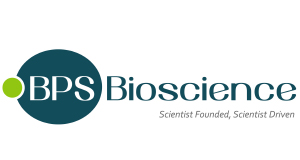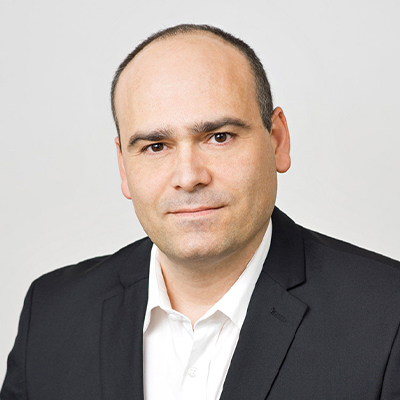CD4+ TCR Knockout NFAT-Luciferase Reporter Jurkat Cell Line
CD4+ TCR Knockout NFAT-Luciferase Reporter Jurkat Cell Line
Artikelnummer
BPS82319
Verpackungseinheit
2 vials
Hersteller
BPS Bioscience
Verfügbarkeit:
wird geladen...
Preis wird geladen...
Products from BPS Bioscience require a minimum order value above 400€
Application: Study transgenic TCR expression by introducing TCR alpha and beta chains. Study the activation of introduced TCRs by cognate peptide(s) and MHCII-expressing APCs (Antigen Presenting Cells).
Background: The TCR (T Cell Receptor) protein complex is found on the surface of T cells and is responsible for recognizing antigens bound to MHC (Major Histocompatibility Complex) molecules. Stimulation of the TCR results in activation of downstream NFAT (Nuclear factor of Activated T-cells) signaling. NFAT is a family of transcription factors that has an important function in immune responses, for example by inducing the expression of various cytokines (such as interleukin-2 to 4, and TNF-alpha) in T cells. NFAT is regulated by Ca2+ and the Ca2+/calmodulin-dependent serine phosphatase calcineurin. CD4 is a cell surface glycoprotein found on partially defined functional T cell subsets, including helper T cells and T-regulatory cells, peripheral monocytes and other APCs (antigen-presenting cells). The ectodomain of CD4 binds to membrane-proximal domains of MHC class II molecules, while its cytoplasmic domain interacts with the protein tyrosine kinase p56lck (lck) through a shared cysteine-containing motif. CD4+ T cells, or helper T cells, are one type of lymphocyte that helps coordinate the immune response against infection and disease by activating cells of the innate immune system, B lymphocytes, and cytotoxic T cells. CD4+ T cells are activated by interaction between the TCR (T cell receptor) and its cognate peptide presented on MHC II molecules, and CD4 is a critical component of the T cell receptor complex that recognizes antigenic peptides presented by MHC II molecules, increasing its stability.
Description: This cell line was generated by transducing the TCR Knockout NFAT-Luciferase Reporter Jurkat Cell Line (BPS Bioscience #78556) with lentiviruses (CD4 Lentivirus, Bioscience #78987) to overexpress human CD4 (NM_000616.5). To achieve knockout of TCR (T Cell Receptor), the TRAC (T-Cell Receptor Alpha Constant) and TRBC1 (T-Cell Receptor Beta Constant 1) domains of the TCRα/β chains were genetically removed by CRISPR/Cas9 genome editing from Jurkat cells that stably expressed firefly luciferase under the control of NFAT response elements. TCRα/β knockout in the TCR Knockout NFAT-Luciferase Reporter Jurkat Cell Line was confirmed by both genomic sequencing and flow cytometry. Expression of CD4 in CD4+ TCR Knockout NFAT-Luciferase Reporter Jurkat Cell Line was confirmed by flow cytometry. The cell line does not respond to anti-CD3 agonist antibodies, as opposed to the parental NFAT-Luciferase Reporter Jurkat Cell Line (BPS Bioscience #60621). This cell line has been functionally validated by activation of a transgenic Influenza A Virus HA TCR by the cognate Influenza HA H3 Peptide and MHCII-expressing Antigen Presenting Cells.
Host Cell Line: Jurkat
Mycoplasma Testing: The cell line has been screened to confirm the absence of Mycoplasma species.
Storage Stability: Cells are shipped in dry ice and should immediately be thawed or stored in liquid nitrogen upon receipt. Do not use a -80°C freezer for long term storage. Contact technical support at support@bpsbioscience.com if the cells are not frozen in dry ice upon arrival.
Supplied As: Each vial contains ˃1 x 106 cells in 1 ml of Cell Freezing Medium (BPS Bioscience #79796)
Uniprot: P01730
Warnings: Avoid freeze/thaw cycles
Biosafety Level: BSL-1
Transfection Method: transducing the TCR Knockout NFAT-Luciferase Reporter Jurkat Cell Line (BPS Bioscience #78556) with lentiviruses (CD4 Lentivirus, Bioscience #78987)
SIN Vector?: yes
References: Janeway C.A. Jr., 1991 Semin Immunol. 3(3):153-60.
Fleury S.G., et al., 1991 Semin Immunol. 3(3):177-85.
Hennecke J. and Wiley D.C., 2002 J Exp Med. 195:571-581.
Application: Study transgenic TCR expression by introducing TCR alpha and beta chains. Study the activation of introduced TCRs by cognate peptide(s) and MHCII-expressing APCs (Antigen Presenting Cells).
Background: The TCR (T Cell Receptor) protein complex is found on the surface of T cells and is responsible for recognizing antigens bound to MHC (Major Histocompatibility Complex) molecules. Stimulation of the TCR results in activation of downstream NFAT (Nuclear factor of Activated T-cells) signaling. NFAT is a family of transcription factors that has an important function in immune responses, for example by inducing the expression of various cytokines (such as interleukin-2 to 4, and TNF-alpha) in T cells. NFAT is regulated by Ca2+ and the Ca2+/calmodulin-dependent serine phosphatase calcineurin. CD4 is a cell surface glycoprotein found on partially defined functional T cell subsets, including helper T cells and T-regulatory cells, peripheral monocytes and other APCs (antigen-presenting cells). The ectodomain of CD4 binds to membrane-proximal domains of MHC class II molecules, while its cytoplasmic domain interacts with the protein tyrosine kinase p56lck (lck) through a shared cysteine-containing motif. CD4+ T cells, or helper T cells, are one type of lymphocyte that helps coordinate the immune response against infection and disease by activating cells of the innate immune system, B lymphocytes, and cytotoxic T cells. CD4+ T cells are activated by interaction between the TCR (T cell receptor) and its cognate peptide presented on MHC II molecules, and CD4 is a critical component of the T cell receptor complex that recognizes antigenic peptides presented by MHC II molecules, increasing its stability.
Description: This cell line was generated by transducing the TCR Knockout NFAT-Luciferase Reporter Jurkat Cell Line (BPS Bioscience #78556) with lentiviruses (CD4 Lentivirus, Bioscience #78987) to overexpress human CD4 (NM_000616.5). To achieve knockout of TCR (T Cell Receptor), the TRAC (T-Cell Receptor Alpha Constant) and TRBC1 (T-Cell Receptor Beta Constant 1) domains of the TCRα/β chains were genetically removed by CRISPR/Cas9 genome editing from Jurkat cells that stably expressed firefly luciferase under the control of NFAT response elements. TCRα/β knockout in the TCR Knockout NFAT-Luciferase Reporter Jurkat Cell Line was confirmed by both genomic sequencing and flow cytometry. Expression of CD4 in CD4+ TCR Knockout NFAT-Luciferase Reporter Jurkat Cell Line was confirmed by flow cytometry. The cell line does not respond to anti-CD3 agonist antibodies, as opposed to the parental NFAT-Luciferase Reporter Jurkat Cell Line (BPS Bioscience #60621). This cell line has been functionally validated by activation of a transgenic Influenza A Virus HA TCR by the cognate Influenza HA H3 Peptide and MHCII-expressing Antigen Presenting Cells.
Host Cell Line: Jurkat
Mycoplasma Testing: The cell line has been screened to confirm the absence of Mycoplasma species.
Storage Stability: Cells are shipped in dry ice and should immediately be thawed or stored in liquid nitrogen upon receipt. Do not use a -80°C freezer for long term storage. Contact technical support at support@bpsbioscience.com if the cells are not frozen in dry ice upon arrival.
Supplied As: Each vial contains ˃1 x 106 cells in 1 ml of Cell Freezing Medium (BPS Bioscience #79796)
Uniprot: P01730
Warnings: Avoid freeze/thaw cycles
Biosafety Level: BSL-1
Transfection Method: transducing the TCR Knockout NFAT-Luciferase Reporter Jurkat Cell Line (BPS Bioscience #78556) with lentiviruses (CD4 Lentivirus, Bioscience #78987)
SIN Vector?: yes
References: Janeway C.A. Jr., 1991 Semin Immunol. 3(3):153-60.
Fleury S.G., et al., 1991 Semin Immunol. 3(3):177-85.
Hennecke J. and Wiley D.C., 2002 J Exp Med. 195:571-581.
| Artikelnummer | BPS82319 |
|---|---|
| Hersteller | BPS Bioscience |
| Hersteller Artikelnummer | 82319 |
| Verpackungseinheit | 2 vials |
| Mengeneinheit | PAK |
| Wirt | Human |
| Produktinformation (PDF) | Download |
| MSDS (PDF) |
|

 English
English






